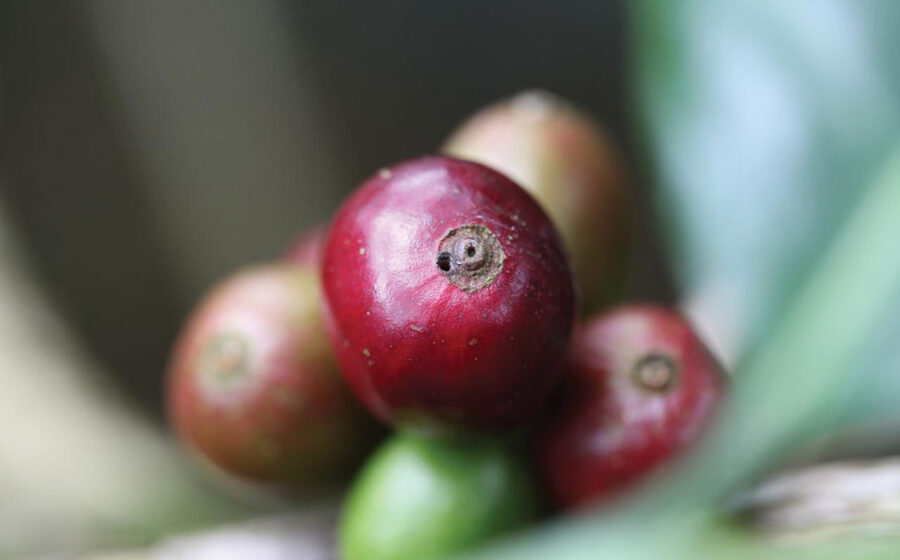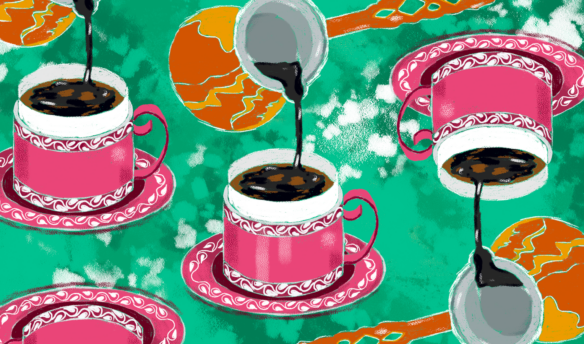[S]ince the coffee berry borer was discovered on Hawaii’s Big Island in 2010, destroying the devastating pest has become the critical mission of Hawaiian coffee farmers and extension agents. In the wake of the news that the bug is on Oahu, hope, at least some, is being placed in another bug. To help fight the borer, coffee farmers are raising an army of killer beetles.
A few years ago during lab work, an extension agent placed borer larvae and flat bark beetles together to see if the predators would find the borers tasty. They did. Field studies then showed these common beetles had found a taste for borer on their own. Across the island, they were discovered inside ripe cherries and raisins, which they’d entered by way of a borer’s hole, where they were feasting on borer eggs, larvae, and pupae. “We have not seen any evidence that they have damaged the coffee,” says Andrea Kawabata, a University of Hawaii assistant extension agent who is running the beetle program, called the Cathartus Project, a name that would make a Marvel villain proud. Further studies showed the beetles had no taste for green or parchment coffee either.
In early February, more than 100 kits filled with roughly 100 beetles were distributed to coffee farmers. The kits included two types of flat bark beetles, the square-necked grain beetle and another that has no common or even species name (Cathartus quadricollis and Leptophloeus sp., for all you entomologists). The beetles will feed on cornmeal and cracked corn for a few months, doubling in number before they’re released into the farms.
Not much is known about the beetles. They are likely not native to Hawaii, but they are well established on the islands. This is actually the second time they’ve been used as agricultural warriors. Previously, macadamia nut farmers had to fight the tropical nut borer, and the flat bark beetles were used to limited effect. The lack of understanding, which the Cathartus Project hopes to rectify, is partly why some farmers have eschewed taking the beetle bombs offered by the extension service.
That’s fine with Kawabata. The beetles alone won’t eradicate the borers. “It’s an entire integrated pest management system,” she says. The beetles are just one weapon, one of unknown efficacy. “We give them as much information as we can about what we know about these beetles now. And then we give them the option to use these kits. That’s up to them.”
—Cory Eldridge is Fresh Cup’s editor.















